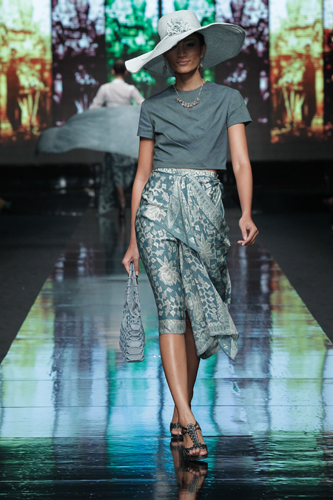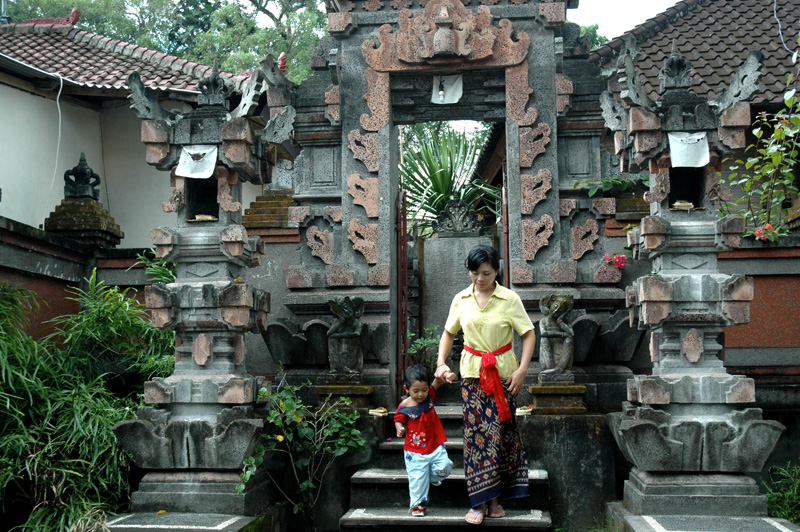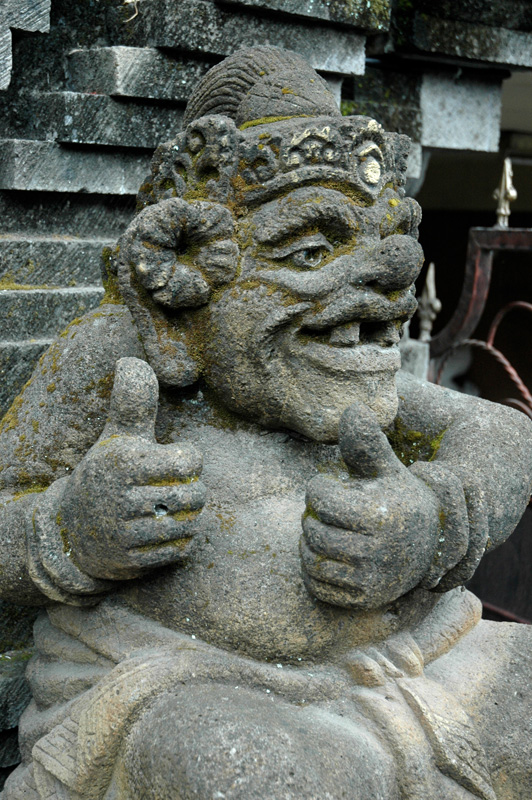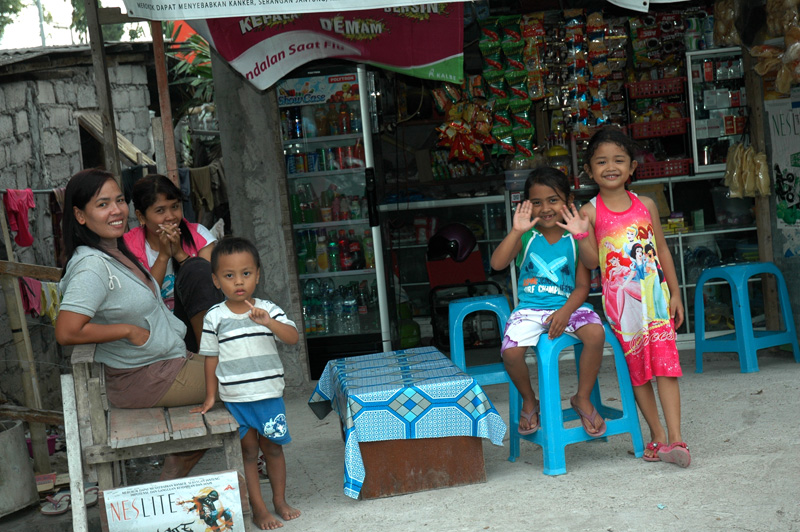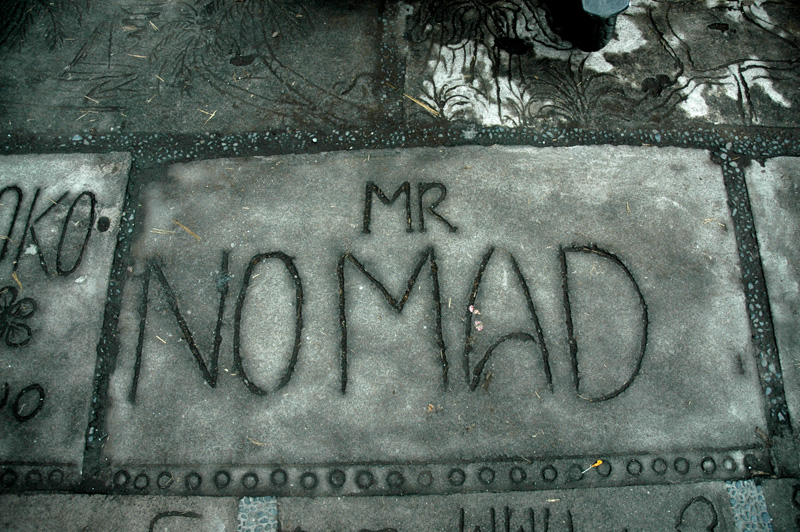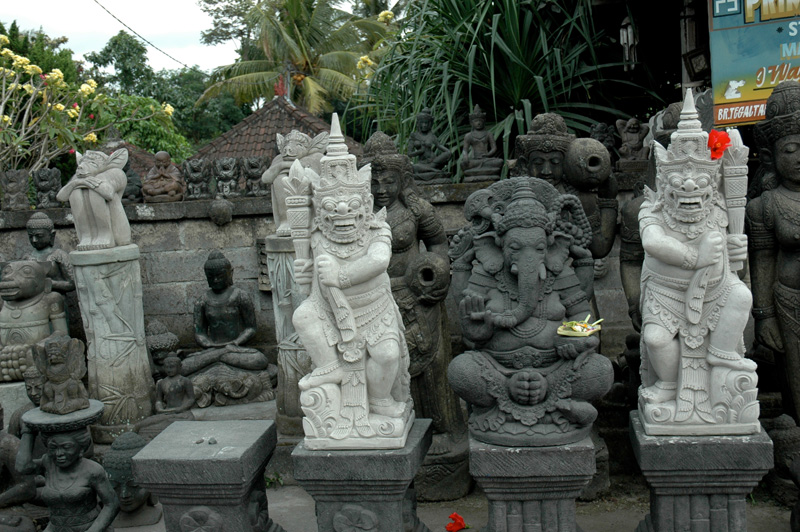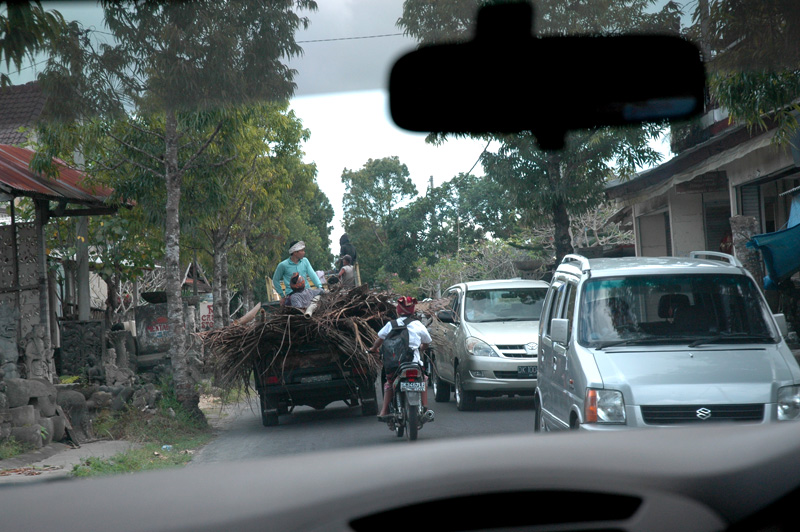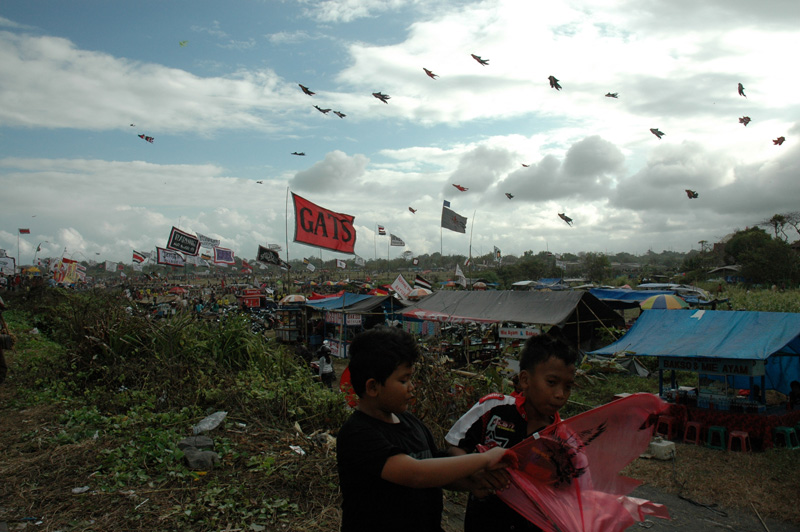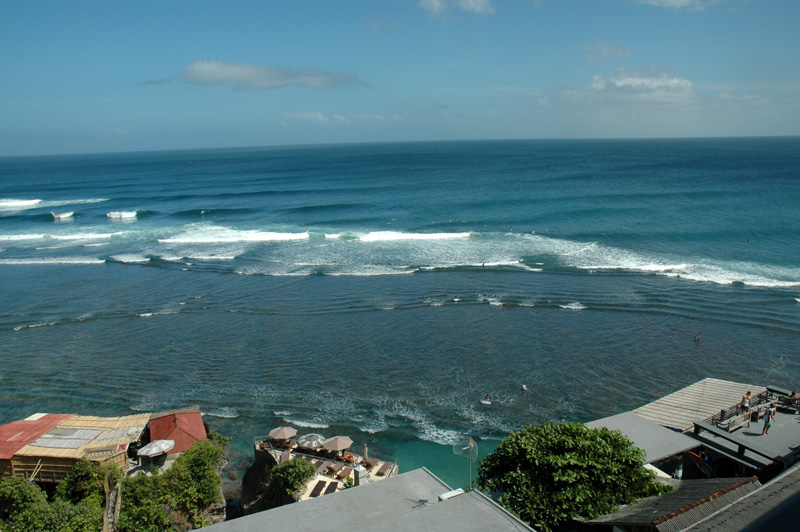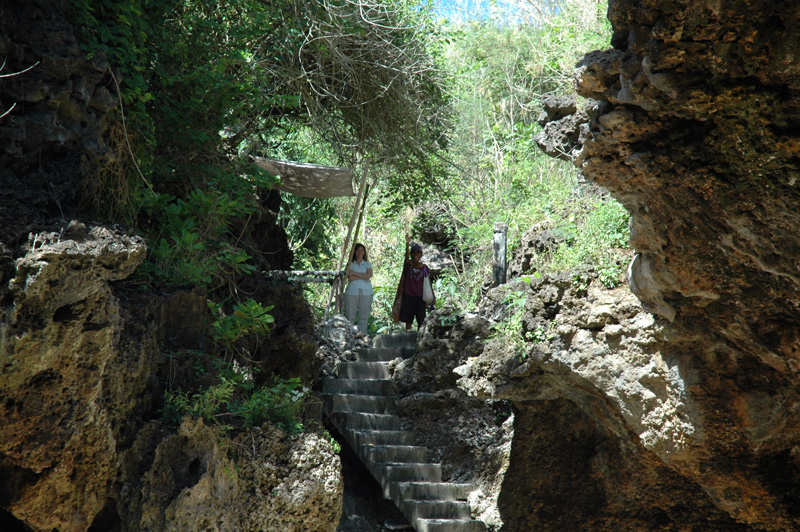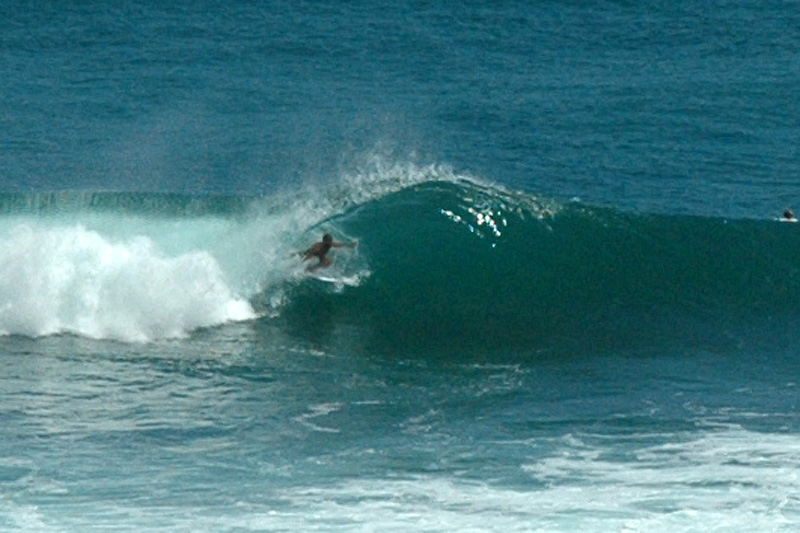Throughout our trip in Indonesia, and I expect our upcoming visit to Thailand, we have had the opportunity to meet people dedicating their work to conservation of heritage craft traditions and fair-trade approaches enabling the craftspeople a sustainable income. Two of the most inspiring groups we came across were focussed on textile craft: Threads of Life in Bali, and Galeri Batik Jawa in Yogyakarta.
Threads of Life, according to their site, is “a fair trade business that uses culture and conservation to alleviate poverty in rural Indonesia. The heirloom-quality textiles and baskets we commission are made with local materials and natural dyes. With the proceeds from the Threads of Life gallery, we help weavers to form independent cooperatives and to manage their resources sustainably.”
They work with textile cooperatives all over the region, sometimes helping to form the cooperative itself, and they recommend that each member of the cooperative give a small percentage of their earnings to a group fund that can be used to finance materials, phone calls to buyers, microcredit opportunities, etc. Threads of Life also counsels the groups on records keeping so that those funds are tracked appropriately and the decisions of how to use the funds can be based on records of past successes or challenges.
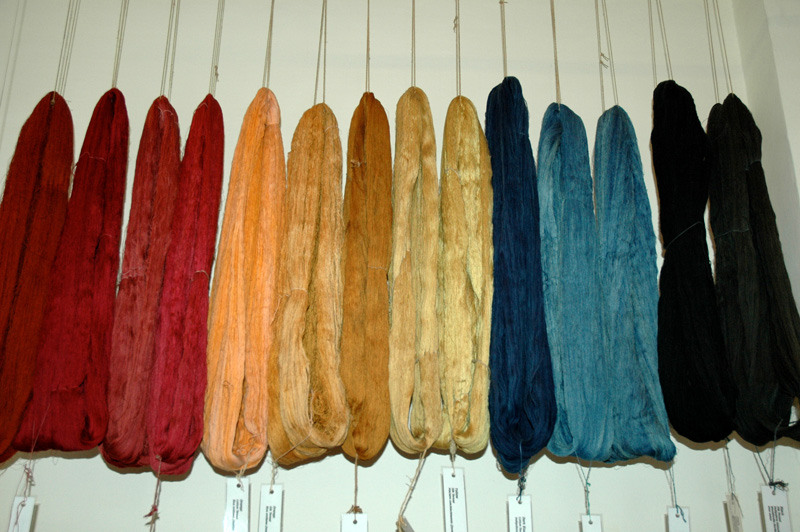
Here are some naturally dyed threads shown at the Threads of Lefe showroom in Ubud, Bali. The vibrance of the finished threads and the weavings made from them are stunning.

Batik patterns are created using complex wax patterns. The wax is painted on to the base cloth wherever color should not be. Then, the cloth is dipped into the dye and all the non-wax areas are dyed. In order to get a rich color, the fabric must be dipped and dried multiple times. If there is more than one color involved, then after the first color is complete, all of the wax is taken off and a new wax pattern is painted on for the second color.
Threads of Life is involved with many different textile art forms, most of which are weaving related. When you purchase a textile from Threads of Life, you receive information specifically about the textile art form, the region it came from and even the weaver herself.
Another heritage-focused textile effort is represented by Laretna Adishakti and Galeri Batik Jawa in Yogyakarta, Indonesia. Laretna or as she is known, “Sita,” is an architect and professor at Gadjah Mada University, Chairperson of the Jogja Preservation Society and a board member of the Indonesian Heritage Trust.
With her cultural heritage knowledge and living in her home town of Jogja, Sita was affected by the massive destruction and displacement of people after the 2006 earthquake in the region which caused over 5000 deaths and 1.5 million homeless. With villages entirely buried, whole cultures were in dire need and at risk of being lost forever. Sita and others developed connections with batik artisans in the area and provided a foundation to enable them to continue working within their field of expertise, thereby helping the individuals overcome their newly homeless state as well as saving an art and tradition.
Galeri Batik Jawa is particularly known for their collection of indigo batiks. Walking into the showroom is stunning with the deep rich blues jumping off the fabric. The deeper the blue, the more times the pattern was dipped in order to achieve the color. Some fabrics are dipped as many as 30 times.

Indigo Batik, Galeri Batik Jawa – we purchased this awesome dark blue batik. The cracks throughout are due to the wax cracking. Sometimes this is intentional and sometimes not. Regardless, we liked the texture it added to the design.
Browns are another traditional color used in Javanese batiks. Much of the brown is from Mahogany. There is a pinkish brown from another plant that sounds something like “dink” but I never caught the word fully.
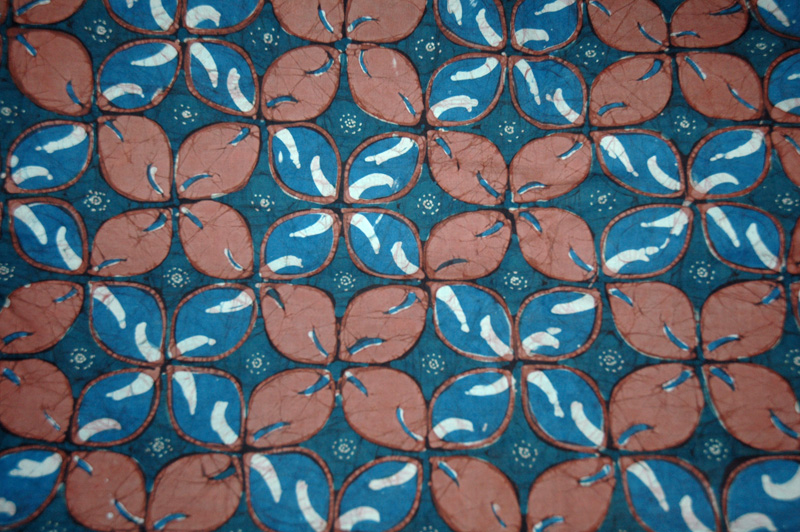
Here’s another batik design that caught our eye.The brownish pink with blue combination is so yummy!
In 2009, UNESCO designated Indonesian batik as a Masterpiece of Oral and Intangible Heritage of Humanity. With this designation, UNESCO insisted they preserve their heritage. IT can be difficult to preserve a heritage, however, when the reasons for its creation no longer exist in the societal culture. For instance, many of these batik processes and designs were used specifically for royalty or nobility or ceremonial marriage textiles. With western dress becoming more and more the norm, and marriages and wedding ceremonies handled completely differently today, the request for these batiks is practically non-existent outside of purely historical contexts. So, how to save the heritage when the need is no longer there? Create a new need.
Galeri Batik Jawa is just one of many batik brands bringing traditional batik process to modern fashion. Sita and her group commissions the batik designs and purchases the waxed textile. They develop natural dyes from existing recipes or buy the dyes from dye crafts people. They then dye the fabric and use it not only in tapestry form, but also in cut-and-sew fashion. Galeri Batik Jawa has been in Jakarta Fashion Week and Tokyo Fashion Week showing traditional batik prints in contemporary fashion style.
With fast and colorful printing techniques available, a batik look can be created very inexpensively, pricing the artists out of the market. But heritage groups such as Threads of Life and Galeri Batik Jawa are showcasing the difference between cheap machine-printed batik patterns and the true artistry of handmade Batik. And consumer trends are all demanding “back-to-nature” and natural materials over the chemically treated world we have been living in. If they continue their efforts not only to preserve and sustain the cultural heritage of batik, but always press forward to create demand and understand consumer wants and needs in today’s and tomorrow’s markets, they will hopefully succeed in keeping these traditional art forms as a vital and relevant part of the future.
see Aly’s post about Laretna Adishakti and Galeri Batik Jawa here:
http://aly.inventiveculture.com/2012/07/21/creativity-through-preservation/


